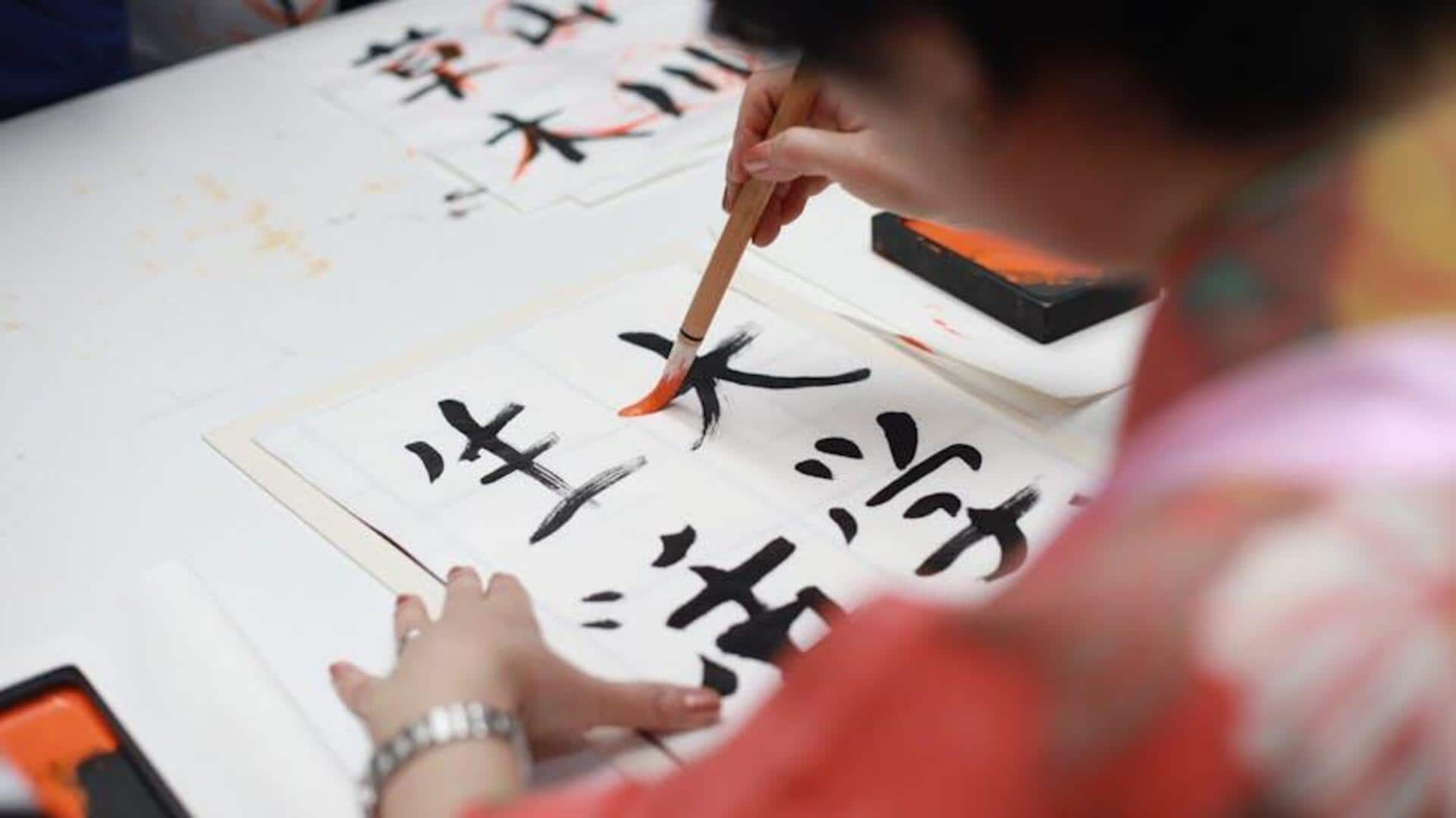
5 interesting Japanese writing traditions you'll love
What's the story
From the beautiful calligraphy styles to the selection of specific writing tools, Japanese writing traditions are rich, diverse, and an integral part of the country's heritage. Evolving over centuries, these traditions have been shaped by several influences yet remain unique in their own way. Here are five of the most unusual Japanese writing traditions that continue to fascinate and intrigue enthusiasts worldwide.
#1
Kanji characters with multiple readings
Kanji characters in Japanese have several readings, which can be confusing for learners. Each character may have an on reading (from Chinese pronunciation) and a kun reading (native Japanese words). This duality makes the language flexible but something you need to study hard to master. Context is everything as it decides what reading is appropriate, adding depth and complexity to written communication.
#2
Hiragana and Katakana usage
In Japanese writing, Hiragana and Katakana are two syllabaries used in addition to Kanji. Hiragana is mainly employed for native words, grammatical functions, and verb endings, whereas Katakana is used for foreign loanwords, onomatopoeia, and emphasis. Switching between these scripts effortlessly is crucial for fluency in written Japanese. It enables writers to express nuances well by opting for the right script according to context.
#3
Calligraphy as an art form
Calligraphy occupies a sacred position in Japanese culture, both as an art and a meditative practice. Popularly called shodo, the tradition focuses on achieving balance, harmony, and precision in strokes of the brush. Artists spend years mastering the craft with traditional brushes made of animal hair or bamboo pens with ink sticks ground on stone slabs. Calligraphy pieces are prized not just for their beauty but for the emotions they convey with expressive brushstrokes.
#4
Vertical writing orientation
Traditional Japanese texts are written vertically from top to bottom and right to left. It is an old practice, especially in poetry, and modern publications may use horizontal layouts depending on the type of content. This vertical orientation is common in literature and poetry, which reflects the culture's resilience and adaptability. It signifies continuity amidst societal evolution, displaying the timeless artistry and collective spirit of Japanese culture.